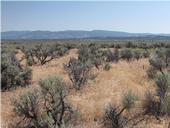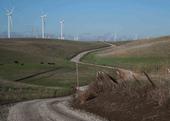- Author: Brad Hanson
We commonly select for specific weeds in agricultural systems because of the neccessary managment practices. Cultivation, fertilization, irrigation, weed management, etc all can affect the weeds in a given field. Some weeds prosper under high fertility, high disturbance, and regular irrigation and tend to be very common in ag fields. Other species do not do as well in those conditions and are found in roadsides, field margins, or non crop areas.
Similar issues can occur with our selection of ornamental plants. Some plants are values as ornamental plants becasue they are very adaptable and easy to grow, can escape cultivation and become weedy in various ecosystems. Here is a link to an article in a magazine called High...
- Author: Joseph DiTomaso

In a Great Basin sagebrush community, low rates of glyphosate applied at the medusahead tillering stage in late April to early May provided excellent control of medusahead. At this timing, we achieved at least 95% control of medusahead cover and a corresponding reduction in seed production with 4 oz Roundup per acre in 2009 and 9 oz Roundup per acre in 2010. These rates are far lower than those required to control perennial species and provide a more cost effective option to ranchers and land managers compared to other herbicide treatments. Earlier applications required significantly higher rates, probably due to reduced glyphosate activity in cooler...
- Author: Guy B Kyser

Last week I visited one of my favorite experimental sites: the SMUD wind farm in the Montezuma Hills, at the south edge of Solano County. The site overlooks the Sacramento River where it’s a half-mile wide. If you tripped over the back end of Plot #60 and rolled down the hill into the river and floated down through the delta for twenty miles, you’d get to Benicia and the Ghost Fleet.
This is a weird landscape of treeless hills dotted with black cows. To the west is a staggered row of four-hundred foot wind turbines, slowly rotating (if they’re turning fast, then it’s too windy to spray weeds). To the east is a twenty-acre patch of tall, spiny, silvery-colored artichoke thistles. I am here to kill...
- Author: Gale Perez
UC Davis weed experts contribute to pioneering Encyclopedia of Biological Invasions
Cooperative Extension Weed Specialist Joe DiTomaso, Emeritus Professor Robert Norris, and Plant Physiologist Lars Anderson with USDA-ARS Exotic and Invasive Weeds Research are among the international experts who contributed to a soon-to-be released encyclopedia on topic at the forefront of global ecology—biological invasions, or organisms that come to live in the wrong place. This pioneering book, Encyclopedia of...
- Author: John A Roncoroni
Pacific Mosquitofern, (Azolla filculoides) often referred to as Azolla, is native to California. It is considered a desirable component of natural habitats and an important food source for waterfowl. Azolla is a floating aquatic fern that spreads by stem fragments and spores. Azolla as being up to 5cm (2 inches) long, but can be as small as ¼ to ½ inches.
Azolla is often misidentified as duckweed (Lemna spp), another common small floating aquatic plant. Azolla is initially green, like duckweed, but soon turns a red or brown color. This coloration is caused by...


